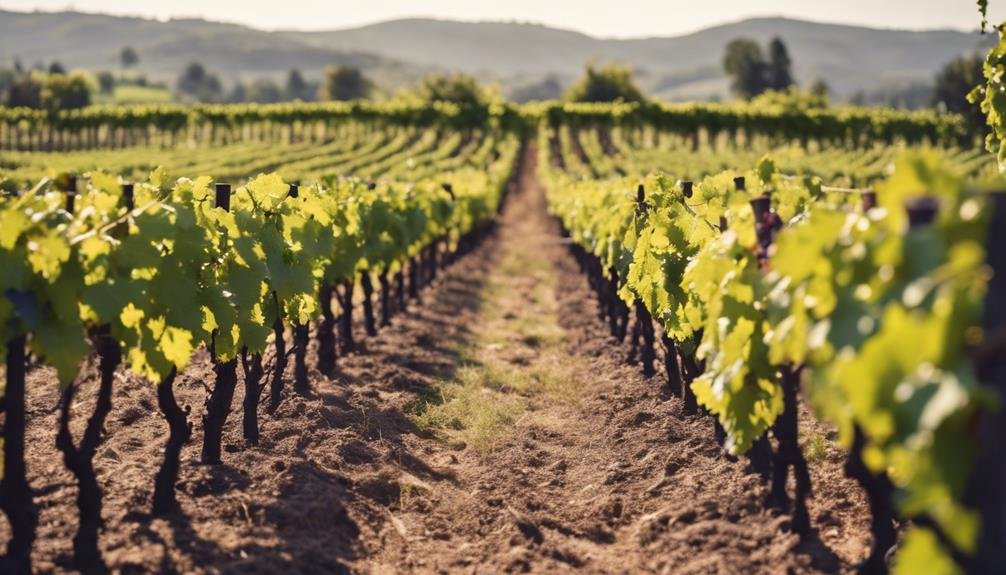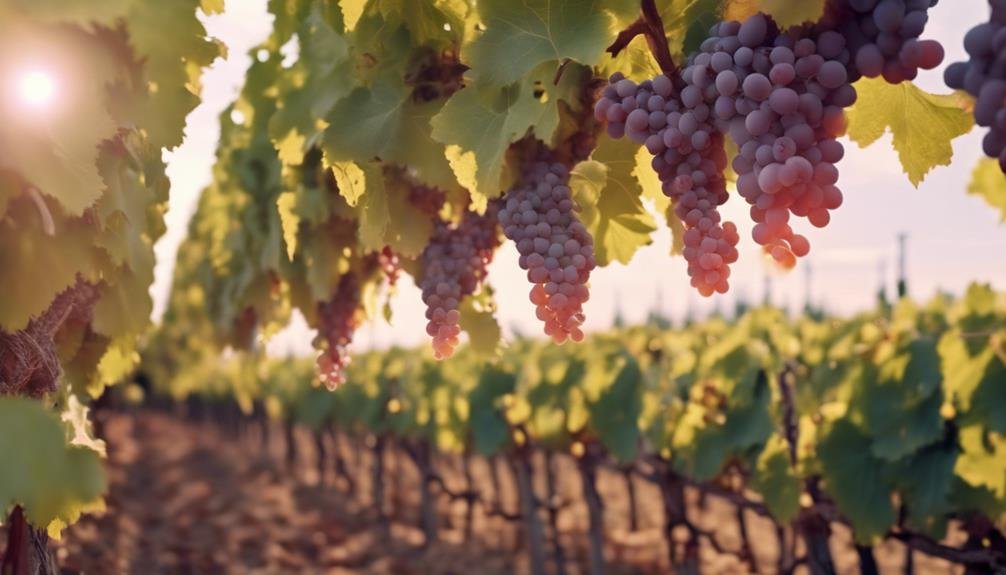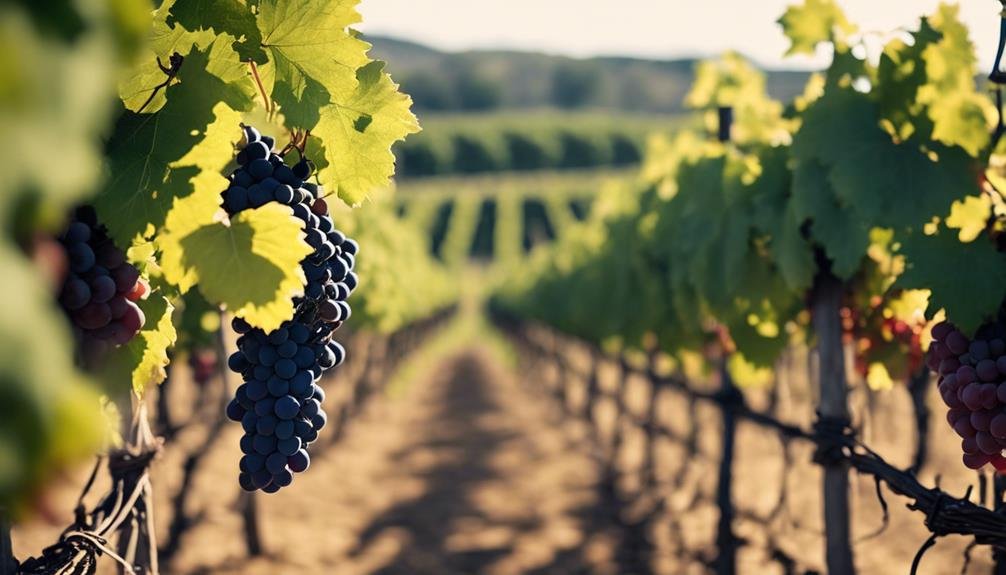Grape vine training methods have evolved greatly to improve wine quality and sustainability worldwide. Viticulturists combine traditional knowledge with modern techniques for best results. Factors like soil type, elevation, and microclimate play key roles in grape development. High vines enhance airflow, reducing fungal risks, while low vines aid in temperature regulation for balanced grapes. Emerging trends in vineyard management focus on water conservation, organic pest control, and soil health, ensuring long-term viability. These advancements are shaping the future of winemaking, prioritizing quality and environmental responsibility. Learn more about the innovative practices revolutionizing grape vine training for top-tier wines.
Evolution of Vine Training Methods
The development of vine training methods has been a crucial aspect in shaping the quality and characteristics of wines produced across different regions of the world. From historical practices to innovative techniques, vineyard management has evolved to optimize grape quality.
Ancient civilizations like the Romans and Greeks employed rudimentary methods, gradually refined over centuries. Today, modern viticulturists utilize cutting-edge approaches to maximize grape potential. By integrating traditional wisdom with contemporary advancements, vine training plays an essential role in enhancing wine quality.
These methods not only influence grape ripening and disease resistance but also impact the overall flavor profile of wines. Through a combination of historical knowledge and innovative practices, vine training continues to revolutionize the wine industry, emphasizing the importance of technique in producing high-quality wines globally.
Climate Considerations for Grape Quality
Considering the intricate interplay of environmental factors, the cultivation of grapevines for premium quality wines necessitates a meticulous assessment of climatic conditions. Soil composition, elevation, microclimate, and rainfall are vital considerations. Different grape varieties thrive in specific soil types, requiring a tailored approach to soil management.
Elevation influences temperature variation, affecting grape ripening and acidity levels. Microclimates within vineyards can create unique growing conditions, impacting grape development. Adequate rainfall is essential for vine health and grape quality, with drought conditions risking vine stress and reduced yields.
Impact of Training Systems on Terroir

Exploring the influence of vine training systems on terroir reveals the nuanced relationship between grape cultivation techniques and the unique environmental characteristics of a vineyard site.
The choice of training system can have a profound impact on the terroir by shaping soil composition and microclimate effects. Different training methods can alter the way vines interact with the soil, affecting nutrient uptake and water retention.
Additionally, training systems can influence the microclimate around the vines, impacting factors such as temperature, humidity, and sun exposure.
Understanding how training systems affect terroir is essential for vineyard management, as it can ultimately shape grape quality and the expression of the unique characteristics of a particular wine-growing region.
Advantages of High Vs Low Vines
Comparison of grapevine cultivation at different heights reveals distinct advantages that impact grape quality and vineyard management strategies.
High vines promote increased airflow, reducing the risk of fungal infections, particularly beneficial in cooler climates. This enhanced airflow also aids in sun exposure, essential for grape ripening and flavor development.
On the other hand, low vines are advantageous for temperature moderation, especially in hotter regions where excessive sun exposure can lead to stress and flavor alterations in grapes. By reducing sun exposure, low vines help maintain more stable temperatures, contributing to more balanced grape development.
Balancing the advantages of high and low vines based on the specific climate and desired grape characteristics can have a significant impact on the quality of wines produced.
Future Trends in Vineyard Management

In light of evolving viticultural practices and shifting climate patterns, the future of vineyard management is poised to witness innovative approaches that optimize grape quality and sustainability. Vineyard managers are increasingly turning to innovative techniques and sustainability practices to enhance grape cultivation. These methods encompass a range of strategies, including water conservation, organic pest control, and soil management. By incorporating these sustainable practices, vineyards can not only enhance the quality of their grapes but also contribute to environmental preservation. The table below provides a glimpse into some future trends in vineyard management:
| Future Trends in Vineyard Management | Benefits |
|---|---|
| Water Conservation | Preserves resources, reduces costs |
| Organic Pest Control | Promotes biodiversity, avoids chemicals |
| Soil Management | Enhances nutrient uptake, improves soil health |
| Sustainable Practices | Ensures long-term viability, supports eco-conscious consumers |
Frequently Asked Questions
How Can Vine Training Methods Affect the Expression of Terroir in Wines?
The vine training method plays a key role in influencing terroir expression in wines by impacting flavor development. Understanding climate and terroir is essential for selecting appropriate training methods. Different techniques have a notable effect on grape quality, underscoring the importance of skilled vineyard management.
What Are the Implications of Vine Training on the Development of Grape Flavors?
The implications of vine training on grape flavors are significant. Training methods influence flavor complexity and aroma intensity. Vineyard observations are essential for selecting suitable techniques, ensuring excellent grape development for quality wines.
How Does Vine Training Influence the Aging Potential of Wines?
Vine training greatly influences the aging potential of wines through its impact on vineyard management. Proper training methods can enhance flavors, manage tannins, and optimize phenolic ripeness, all essential factors in determining a wine's ability to age gracefully.
Can Vine Training Impact the Sustainability of Vineyard Practices?
Vine training plays a pivotal role in enhancing the sustainability of vineyard practices. Proper training methods can improve soil health, promote climate resilience in vineyards, and contribute to long-term sustainability, ensuring the continued success of grape cultivation.
What Role Does Vine Training Play in the Carbon Footprint of Winemaking?
Vine training greatly impacts winemaking's carbon footprint by reducing emissions through energy-efficient practices. Selecting appropriate training systems based on climate and terroir can optimize vineyard management, emphasizing sustainability in the production process.
Conclusion
To sum up, as the saying goes, 'In wine there is wisdom,' the evolution of grape vine training methods continues to shape the landscape of quality wine production.
By understanding the intricate relationship between training systems, grape quality, and terroir, wine producers can revolutionize vineyard management for the future.
The careful selection of appropriate training techniques tailored to specific grape varieties and environmental factors holds the key to crafting exceptional wines that stand the test of time.
